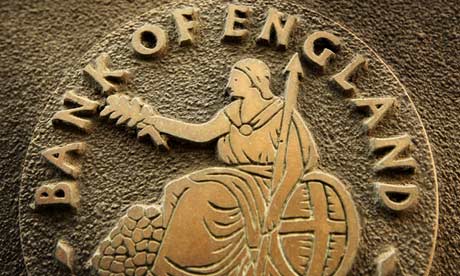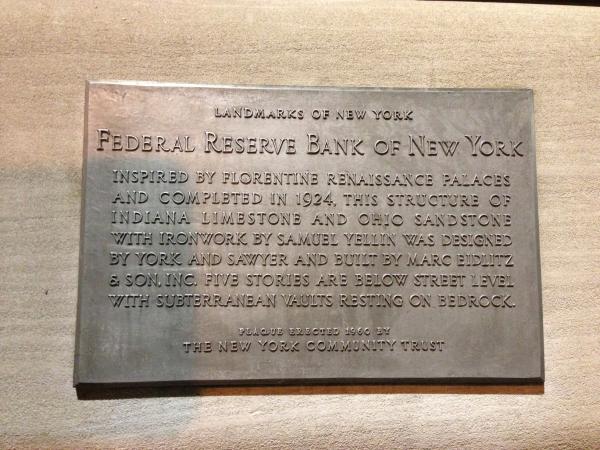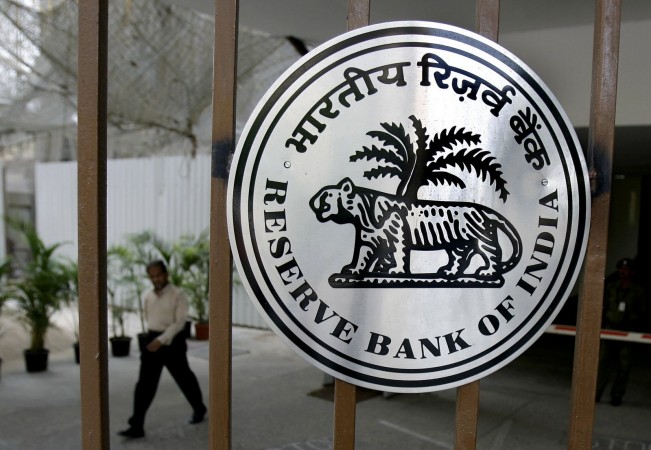The IMF’s Gold Depositories – Part 1, The Legal Background
The International Monetary Fund (IMF) is the world’s third largest official sector holder of gold behind the United States and Germany. According to the Fund’s web site, as at October 2014 “the IMF holds around 90.5 million ounces (2,814.1 metric tons) of gold at designated depositories."
The IMF’s gold holdings were accumulated between 1946 and the late 1970s via Members’ initial quota subscriptions to the Fund, various quota increases, and through a number of additional methods where a Member either sold gold to the Fund or transferred gold to the Fund as part of a repayment obligation. Likewise, gold sometimes flowed in the other direction back to Members, in payment for a Member’s currency, during the 1970s gold restitutions, and via other sales to Members.
With renewed interest in central bank and official gold holdings at international storage locations, it is worth examining what exactly the IMF means by designated depositories and which specific depositories its gold was deposited into.
At this stage its worth stating that the designated gold depositories of the IMF really just mean that a gold account was opened by various authorised signatories in the name of the IMF at certain central banks that offered gold vaulting or storage facilities. There are no stand-alone IMF gold depositories, just gold accounts at existing third-party depositories.
There are many ways to verify the identity of the IMF’s gold depositories. However, the legal approach is the most complete, and also highlights some little known facts.
“Depositories” is a specific legal term appearing in the Articles and Rules and Regulations of the Fund. All aspects of the governance and functioning of the IMF are based on the Fund’s Articles of Agreement, supplemented by its By-Laws, and its Rules and Regulations.
Rule F-1 of the Rules and Regulations relates to the establishment of gold depositories. Article XIII, Section 2(b) also addresses gold depositories and holdings.
The current Rule F-1 reads:
“Rule F-1. Gold depositories of the Fund shall be established in the United States, the United Kingdom, France, and India. The gold of the Fund shall be held with the depositories designated by the members in whose territories they are located at places agreed with the Fund." (Adopted September 25, 1946, amended November 29, 1956, and April 1, 1978)
Note that Rule F-1 has been amended twice. These amendments are key to understanding the genesis of the designated depositories, their locations and their potential locations. The last amendment was applied on 1st April 1978, and before that on 29th November 1956.
In April 1978 the IMF implemented the Second Amendment to its Articles, By-Laws, and Rules and Regulations so as to reflect a number of changes in the international economy including the shift from a par value system to a system of flexible exchange rates, and a reduced role for gold in the international system. As part of the Second Amendment, the Rules and Regulations underwent an extensive overhaul with rules deleted, rewritten and even renamed.
The rule on gold depositories required amending because Members were no longer required to pay subscriptions in gold. During this amendment the gold depository rule was renamed as Rule F-1. It had previously been called Rule E-1.
Rule E-1 prior to the 1978 change read:
“Gold depositories of the Fund shall be established in the United States, the United Kingdom, France, and India. The gold of the Fund shall be held with the depositories designated by the members in whose territories they are located at places agreed with the Fund. A member may pay its gold subscription to the Fund at one or more of the specified gold depositories within the terms of Article XIII, Section 2."
According to comments on the revision of the Rules in 1977, the IMF’s Legal Department staff wrote that “The first two sentences of the provision have been transferred to Rule F-1. The last sentence has been omitted because of the changes in the provisions governing the payment of subscriptions.” Likewise, a comment beside the newly named Rule F-1 stated that “This provision incorporates the first two sentences of the present Rule E-1”.
SM/77/134 “Implementation of the Second Amendment: Revised Rules and Regulations – A through N”
http://adlib.imf.org/digital_assets/wwwopac.ashx?command=getcontent&server=webdocs&value=EB/1977/SM/172483.PDF
Since gold was no longer used to pay subscriptions following the Second Amendment in 1978, the reference to paying gold to gold depositories, based on Article XIII, Section 2, was no longer needed.
Article XIII, Section 2(b) specifies the framework on how gold depositories are designated, the target percentages between which the Fund’s gold was to be initially held between the designated depositories, and the way transfers could occur between locations, including emergency transfers.
Article XIII, Section 2(b) reads as follows:
“Section 2. Depositories (b) The Fund may hold other assets, including gold, in the depositories designated by the five members having the largest quotas and in such other designated depositories as the Fund may select.
Initially, at least one-half of the holdings of the Fund shall be held in the depository designated by the member in whose territories the Fund has its principal office and at least forty percent shall be held in the depositories designated by the remaining four members referred to above.
However, all transfers of gold by the Fund shall be made with due regard to the costs of transport and anticipated requirements of the Fund. In an emergency the Executive Board may transfer all or any part of the Fund’s gold holdings to any place where they can be adequately protected."
Whereas the current Rule F-1 and the pre-1978 Rule E-1 list only four country locations as gold depositories, there is a reference in Article XIII, Section 2 to designated gold depositories of five members. This difference can be understood by looking at the version of Rule E-1 prior to the November 1956 amendment. This is the original version adopted on 25th September 1946 that persisted until 1956.
The originally adopted, pre-1956 version of E-1 read as follows:
“Gold depositories of the Fund shall be established in New York, London, Shanghai, Paris, and Bombay. The gold of the Fund shall be held with the depositories designated by the members in whose territories they are located. A member may pay its gold subscription to the Fund at one or more of the specified gold depositories, within the terms of Article XIII, Section 2."
These five locations of New York, London, Shanghai, Paris and Bombay were chosen since the United States, the United Kingdom, China, France and India were given the five largest quotas (in that order) when the Fund went live, and these countries each designated a depository in these five locations.
India appeared onto the top five quota member list when the Soviet Union declined to join the IMF in late 1946, despite the Russian delegation having attended the Bretton Woods conference and being involved in detailed Fund negotiations after the conference.
In fact, early IMF drafts about the five depositories include Moscow on the list in addition to New York, London, Shanghai and Paris. Interestingly, South Africa also seemed eager to host an IMF gold depository despite not qualifying on quota size grounds.
On 4th September 1946 at Executive Board Meeting 49, just prior to the Fund’s Rules and Regulations being finalised for adoption, Gijsbert Bruins (G W J Bruins) the Executive Director representing the Netherlands and South Africa “raised the request of South Africa that one of the gold depositories should be located there. It was decided to consider this later”.
Although nothing came of this South African request, it’s notable that four of the five current day BRICS countries were in various ways, at the inception of the Fund, in contention for hosting an IMF gold depository. Perhaps the new BRICs Development Bank has taken note of this historical connection.
So, which gold depositories were nominated by the five largest members in respect of New York, London, Shanghai, Paris and Bombay?
Executive Board Document No. 46, Supplement 1 prepared by the Operations Department and dated 5th November 1946 confirms the five depositories, and the quality of gold that would be accepted:
“PAYMENT OF GOLD SUBSCRIPTIONS
1. The nominated gold depositories of the Fund are:-
(1) The Federal Reserve Bank of New York, New York City,
(2) The Bank of England, London.
(3) The Banque de France, Paris.
(4) The Reserve Bank of India, Bombay.
(5) The Central Bank of China, Shanghai.
2. The Fund requires that part of a Member’s quota payable in gold shall be delivered to one or more of the above-mentioned depositories.
3. The gold must be delivered to the Fund in the form of bars having a fineness of .995 or higher and weighing approximately 400 ozs, i.e., the normal size of bars used in international transactions. The Fund is not prepared to accept gold coin. Members may, however, deliver bars of lower fineness and weight by agreement with the Fund. In such an event, Members must be prepared in gold an amount, which would be estimated by the Fund, to cover the conversion of such gold into bars of the required weight and fineness.
4. Bars tendered by Members must be in a condition and have an assay which would be acceptable to the depository in question if such depository were called upon to buy such bars. The assay therefore, must be recognized by the depository in question, and bars must not be mutilated.
5. The weight of the bars tendered must be verified by the depository to which they are tendered
6. Members will bear all the charges made by the depositories for taking into custody for the Fund the Member’s gold subscriptions. Members will themselves make their own arrangements with the depositories concerned in this regard. “All gold must therefore be received by the Fund free of charges.”
A note from John L. Fisher, Head of the Operations Department, to Andre Van Campenhout, Head of the Legal Department dated 16th September 1946 indicates that there was a view that having gold in New York and London would be most useful from an operational point of view, and that there was also concern about possible security risks in China and India at that time.
“Initially, at least 50% of the Fund’s gold must be held in the U.S.A. and 40% in depositories designated by the four Members (other than the U.S.A.) having the largest quotas. But there is a proviso that the Fund shall hold gold where it anticipates that it will want it, subject to its being safe there. The anticipation of the Fund may change from time to time, but in present circumstances it might be thought that the two places where gold might be most useful to the Fund would be the U.S.A. and the UK.”
“….gold put up for subscriptions, repurchases and charges, should be put up in the centre where the Fund anticipates that it will need it. So far as subscriptions are concerned, the anticipations can only be guesses, since the Fund will have had no experience to guide it. But the factor of security should be considered and it is pertinent to observe that there is civil war in China and political unrest in India.”
http://adlib.imf.org/digital_assets/wwwopac.ashx?command=getcontent&server=webdocs&value=\BWC\BWC747-03.pdf
Prior to the payment of member’s initial quota payments into the Fund in 1946-1947, the IMF sent requests to each prospective member informing them of the location of the gold depositories, and asking each country to specify a preferred depository to which it would send its gold payment.
This request appears was made so as to predict whether the Fund would need to actually instruct Member’s to use specific depositories, most likely to direct gold into the depositories so as to satisfy the 50% New York rule, but also so as to result in gold being in “the most useful” locations of New York and London.
The request was in the form of a letter to each country’s Minister of Foreign Affairs, signed by Camille Gutt, Managing Director of the IMF.
“My dear Mr. Minister:
I have the honor to inform you that the International Monetary Fund will have gold depositories at New York, London, Shanghai, Paris and Bombay. The gold subscription of your Government will be payable at one of these depositories.
It is desired that, so far as possible, each member deposit its gold subscription at any depository it selects. It is essential, however, that the Fund comply with the provisions of Article XIII, Section 2(b) concerning the initial distribution of gold holdings of the Fund.
In order that it may be determined whether any instructions will be necessary concerning the depository at which your Government’s gold subscriptions should be paid, it is requested that you furnish the Fund, as soon as possible, with the following information:
(1) The depository at which your Government would prefer to make its
gold payment,
(2) The approximate amount of gold which your Government will pay to the Fund on account of its subscription.
Sincerely yours,
Camille Gutt, Managing Director”
(Draft Letter to the Minister of Foreign Affairs of each member relative to Gold Depositories
http://adlib.imf.org/digital_assets/wwwopac.ashx?command=getcontent&server=webdocs&value=EB/1946/EBD/278427.PDF)
Having an existing gold account in the name of a central bank or a sovereign at a depository such as the FRBNY, Bank of England or Banque de France also most likely affected the choice of depository each Member made. Whatever the reasons behind the initial gold transfers to the various depositories, by the end of June 1947, the IMF’s gold holdings were distributed as follows:
Gold with Depositories, as at 30 June 1947 (fine ounces and per cent distribution)
USA – Federal Reserve Bank of New York 21.782 million 56.72%
UK – Bank of England 13.558 million 35.30%
France – Banque de France 2.283 million 5.94%
India – Reserve Bank of India 0.785 million 2.04%
TOTAL 38.408 million 100%
(Appendix VIII, Schedule 1, Annual Report 1947)
Note that no country deposited gold to the credit of the IMF at the Bank of China in Shanghai, and only India’s initial gold subscription was transferred to the Reserve Bank of India, Bombay.
Popular Blog Posts by Ronan Manly
 How Many Silver Bars Are in the LBMA's London Vaults?
How Many Silver Bars Are in the LBMA's London Vaults?
 ECB Gold Stored in 5 Locations, Won't Disclose Gold Bar List
ECB Gold Stored in 5 Locations, Won't Disclose Gold Bar List
 German Government Escalates War On Gold
German Government Escalates War On Gold
 Polish Central Bank Airlifts 8,000 Gold Bars From London
Polish Central Bank Airlifts 8,000 Gold Bars From London
 Quantum Leap as ABN AMRO Questions Gold Price Discovery
Quantum Leap as ABN AMRO Questions Gold Price Discovery
 How Militaries Use Gold Coins as Emergency Money
How Militaries Use Gold Coins as Emergency Money
 JP Morgan's Nowak Charged With Rigging Precious Metals
JP Morgan's Nowak Charged With Rigging Precious Metals
 Hungary Announces 10-Fold Jump in Gold Reserves
Hungary Announces 10-Fold Jump in Gold Reserves
 Planned in Advance by Central Banks: a 2020 System Reset
Planned in Advance by Central Banks: a 2020 System Reset
 Gold at All Time Highs amid Physical Gold Shortages
Gold at All Time Highs amid Physical Gold Shortages






 Ronan Manly
Ronan Manly 0 Comments
0 Comments














